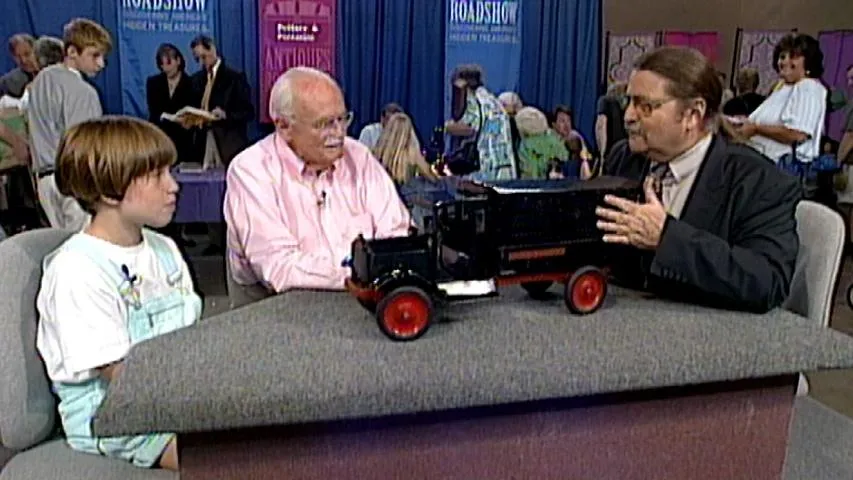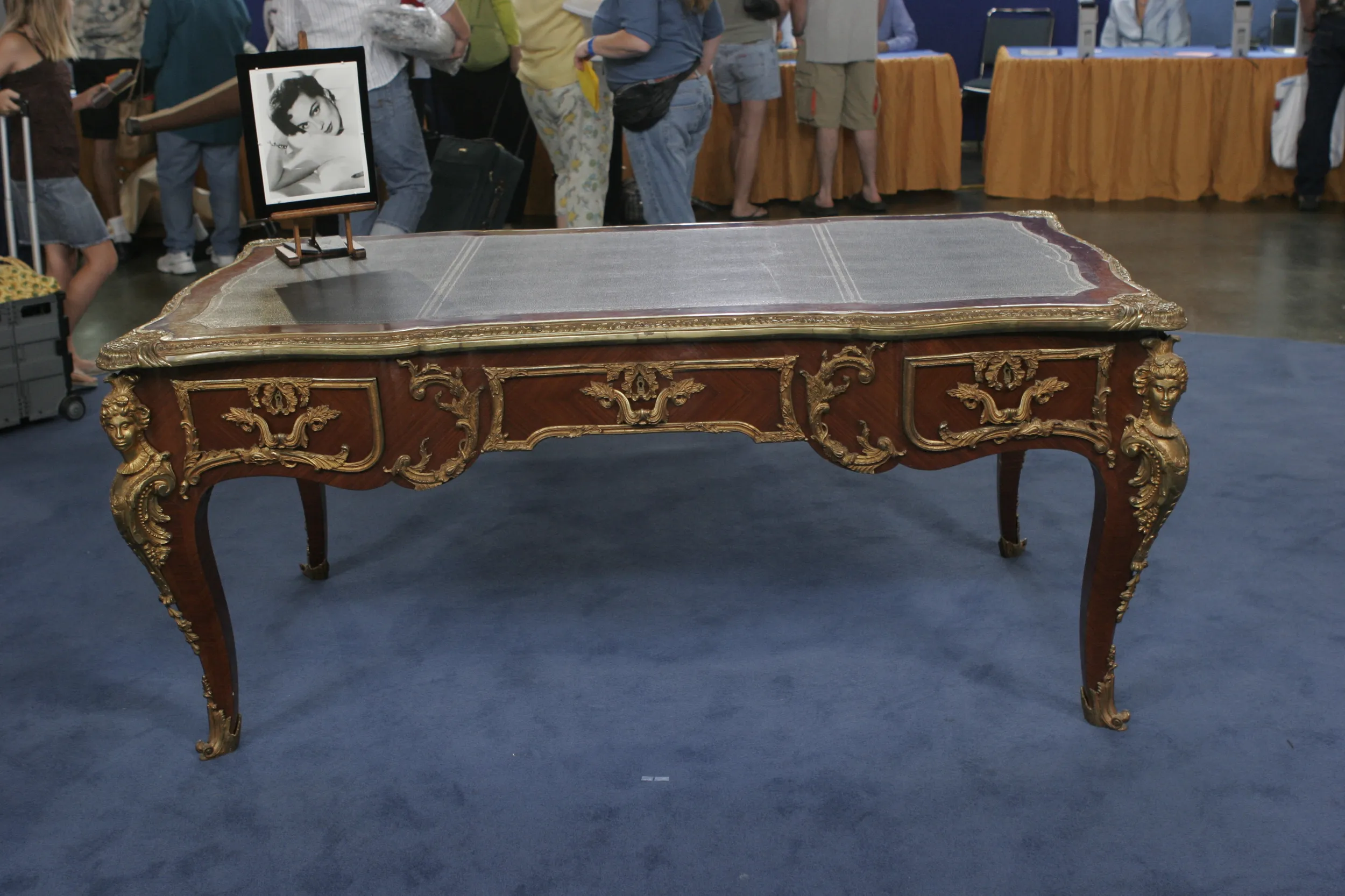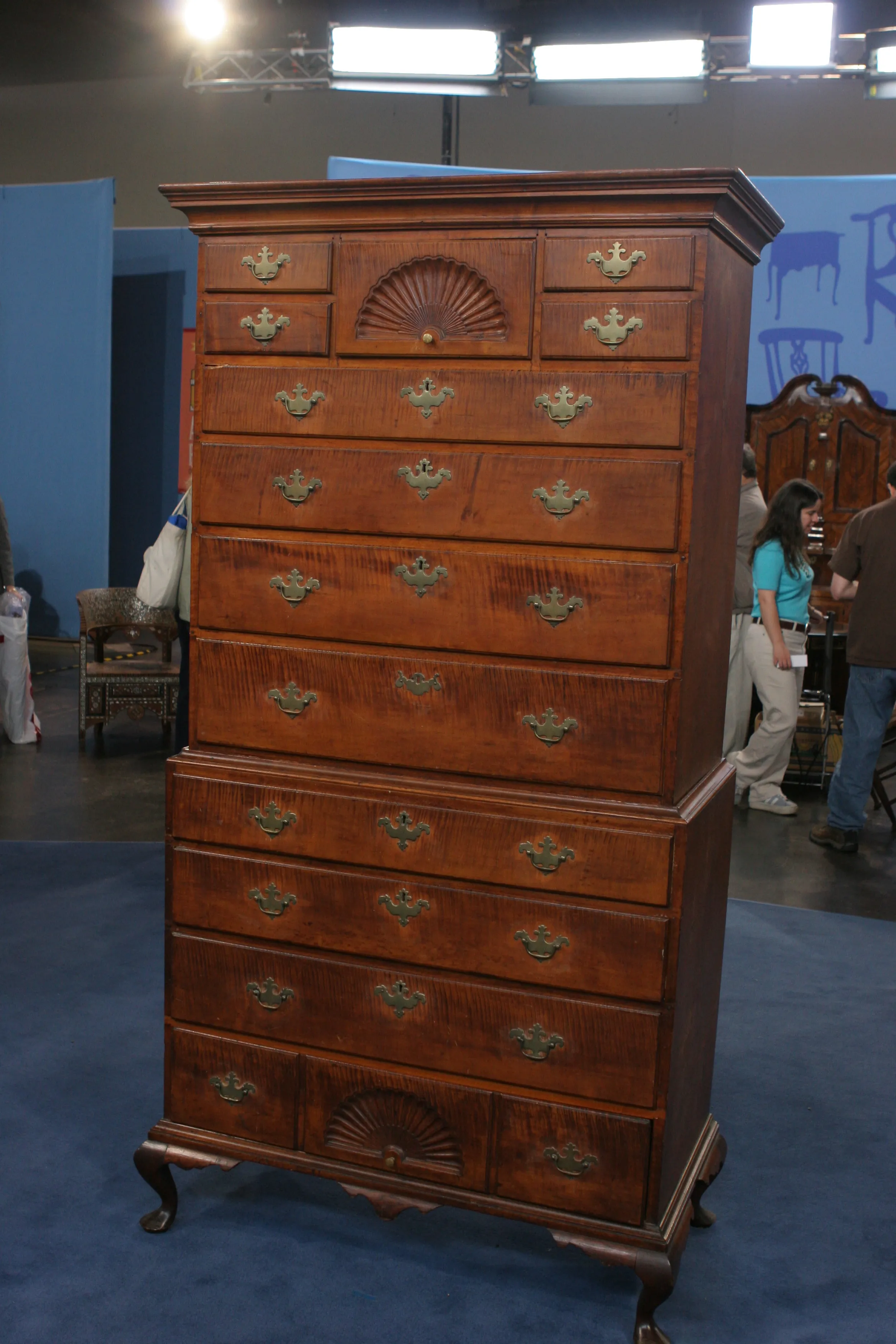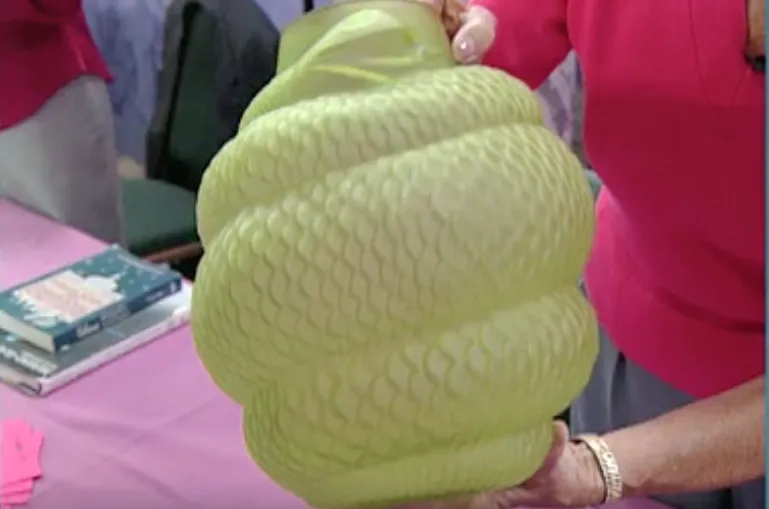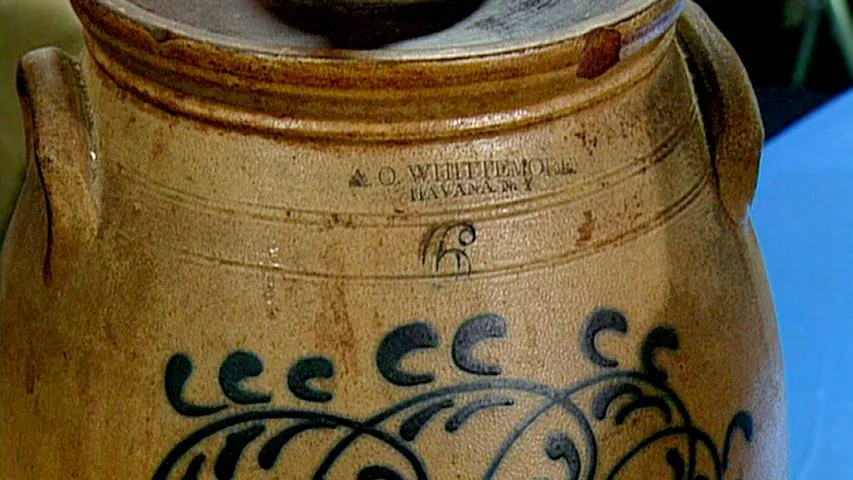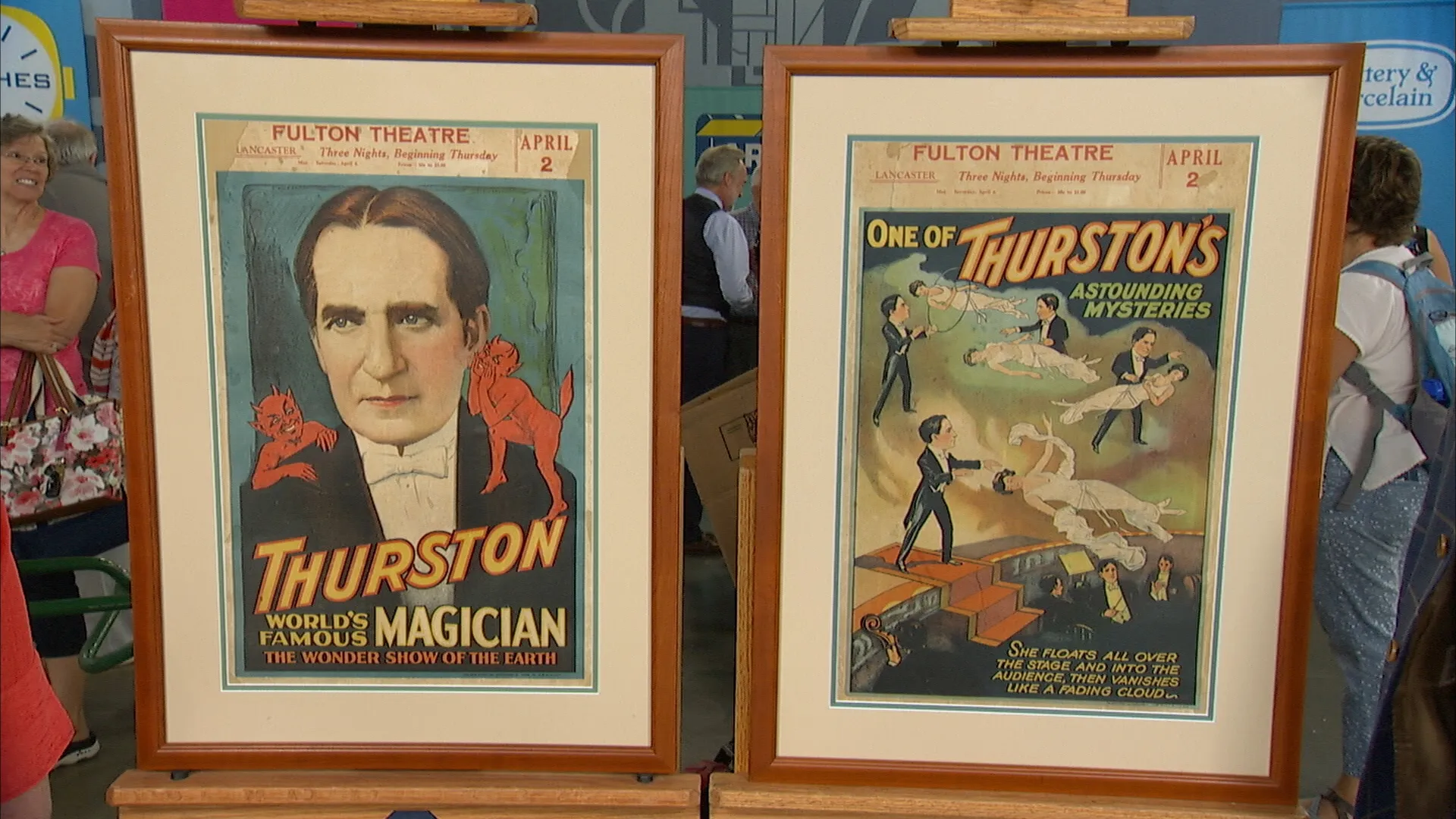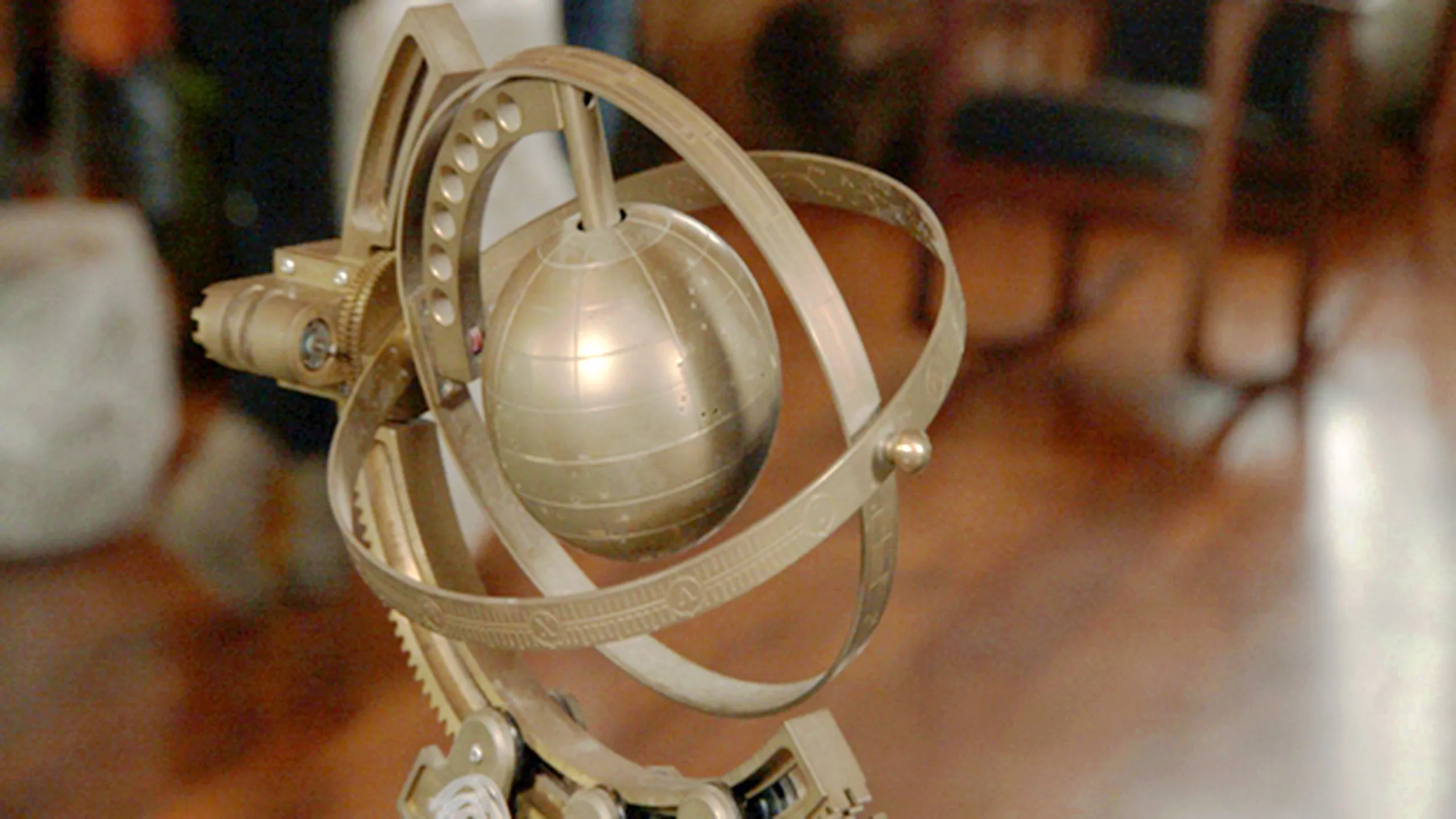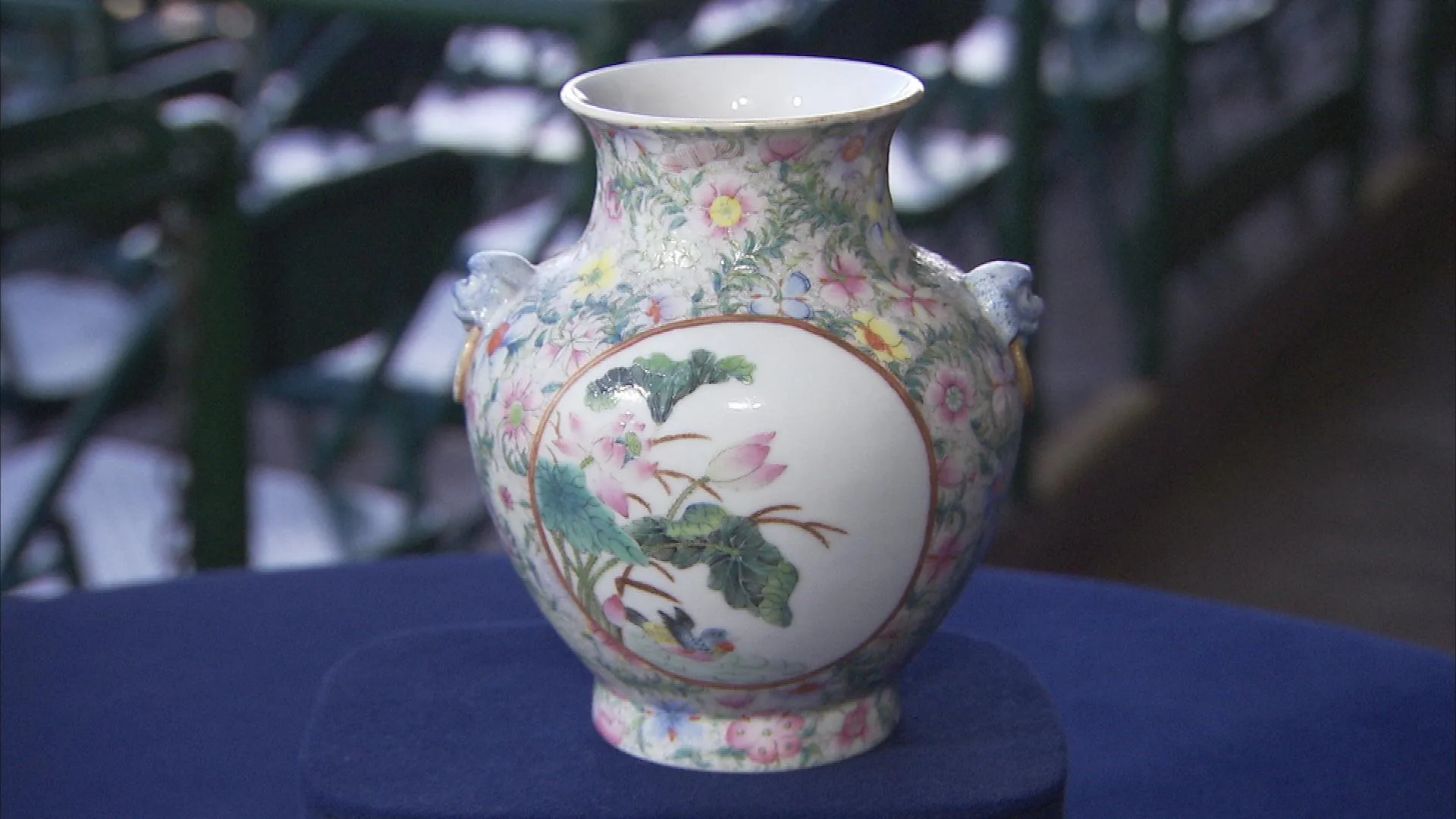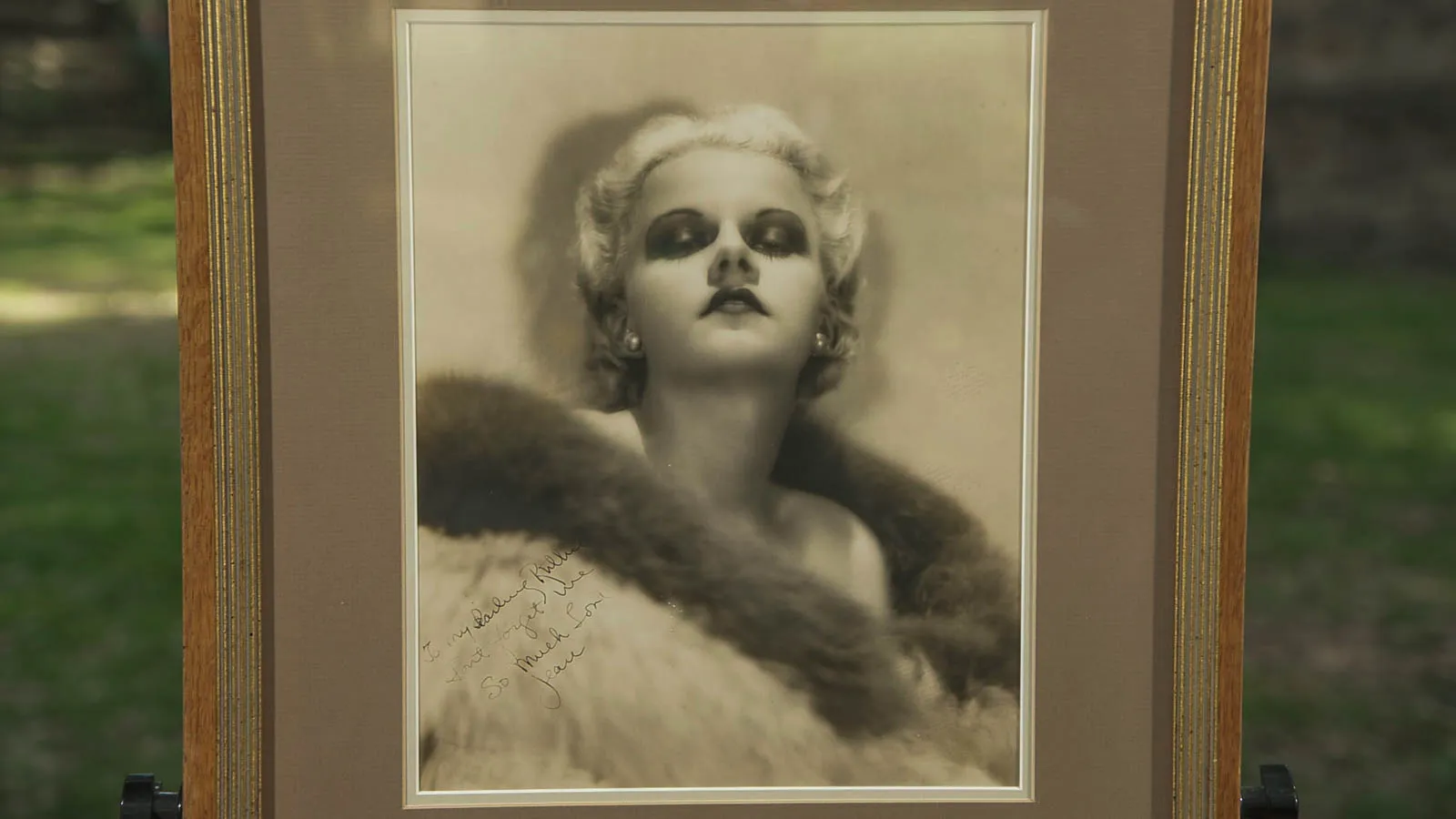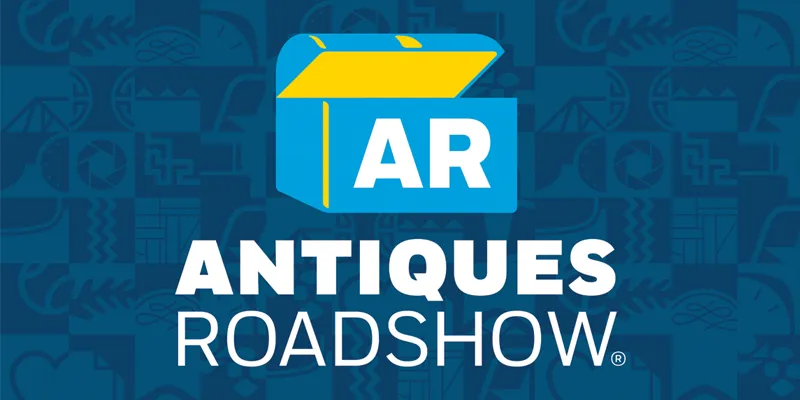GUEST: I think it's a piece of Bakelite.
APPRAISER: Why do you think it's Bakelite and not another form of plastic?
GUEST: Texture and weight.
APPRAISER: The texture of it. Well, this is really interesting. We see a lot of Bakelites at an auction house, and many of the things that come in have value, as you know, and some have very little value. How much did you pay for this?
GUEST: Ten dollars.
APPRAISER: Was this recently?
GUEST: Yes.
APPRAISER: Well, the first thing to determine is how rare is this Bakelite bracelet? And the way we do that is by saying, how many colors does it have? Well, this one only has one color. Does it have carving? This one does not have carving. Does it have laminates where the colors are woven together? Obviously, this one does not. That's what makes a bracelet worth a lot in the market today. However, this one still has value because it has great style. But I'm not going to give you the value just yet. What I wanted to do is a lot of people say, "How do you know it's Bakelite as opposed to another kind of plastic?" So I found a very, very simple test. We need some hot water to test this. It's not scientific equipment. It's just a glass with some supposedly very hot water. You take this, and you dip it in. And then you smell it. And what happens when it's Bakelite-- and this is Bakelite; it passed the test-- it has an acrid smell. It just smells terribly, whereas other plastics have no odor. Now, having said that it's not multicolored, it's not carved, it's just pretty, I would value this at $300 to $500. What do you think?
GUEST: I think I did very well.
APPRAISER: I think you did great. And I really like it, and if you find more, what the fashion statement is, more is better. Wear three, four, or five of these.
GUEST: Great.
APPRAISER: And I hope you continue collecting Bakelite.
GUEST: I will.

